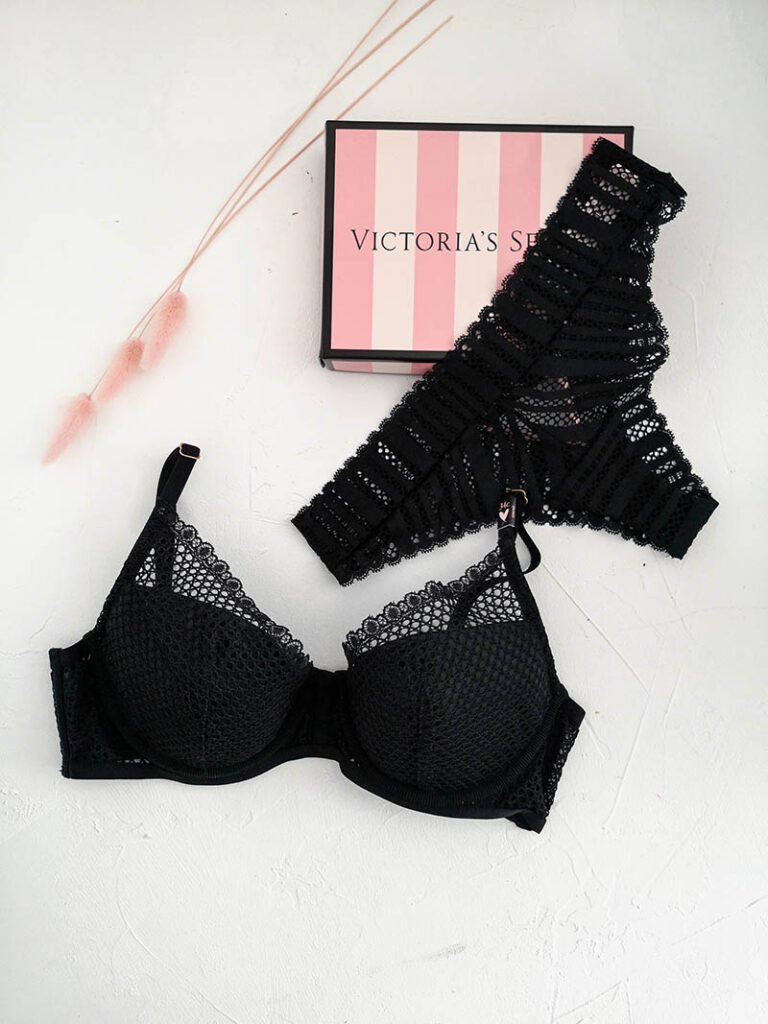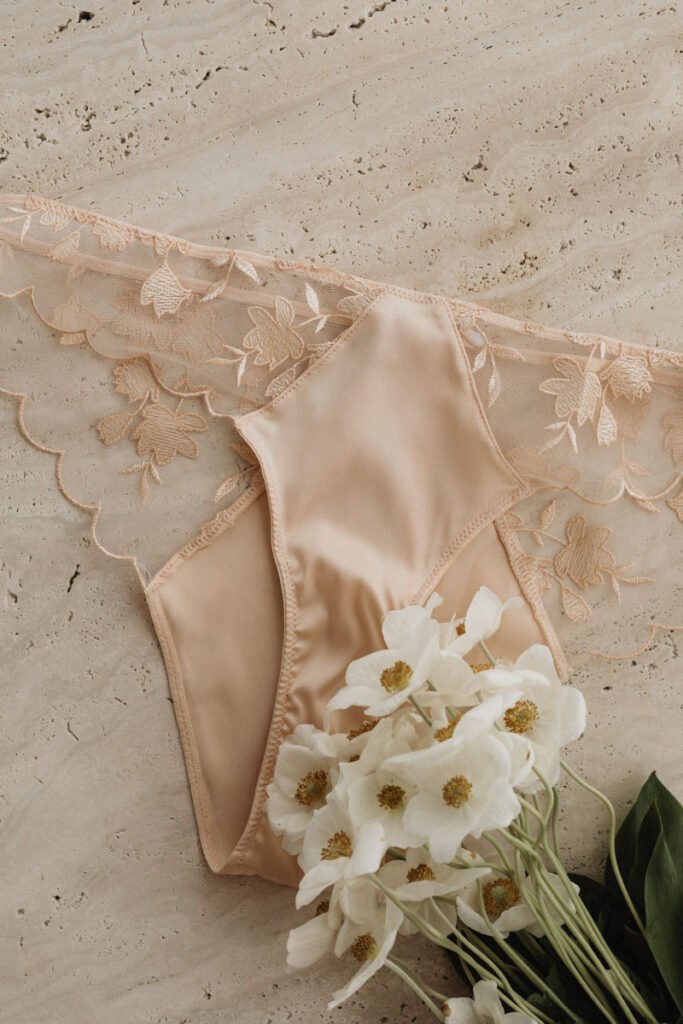Best Fabrics for Women’s Underwear for a Healthy Vagina
Did you know that the fabric of your underwear can directly impact the health of your vagina? That’s right! The type of material that comes into contact with your intimate area plays a crucial role in maintaining an optimal balance of moisture and airflow.
Today, we’ll take a closer look at common fabrics used in creating women’s underwear and evaluate their pros and cons.
Our goal is to help you make an informed choice when shopping for underwear to promote vaginal health and improve your overall hygiene.

Different Types of Underwear
When it comes to underwear, we all know there are plenty of styles and options to choose from.
Depending on the shape, size, and type of fabric used in the construction, they all come with certain advantages and disadvantages.
Let’s begin by taking a look at some popular women’s underwear styles:
- Thong: Ideal for tight-fitting clothing and avoiding visible panty lines. Thongs are typically made from a combination of spandex, polyester, and nylon.
- Bikini: A mid-waist style that provides moderate coverage and is ideal for everyday wear. These panties come in various materials such as cotton, nylon, and rayon.
- Boyshorts: A low-rise style that provides full coverage with a masculine edge. Common fabrics used in creating boyshorts include jersey, modal, and spandex.
- High Waist Briefs: Offering maximum coverage for women with larger tummies or wider hips. They are typically made from a combination of lace and cotton.
- Hipster: A low-rise style that lies just below the hipbone and offers less coverage than briefs. Commonly made from nylon, spandex, and cotton.
- Seamless: Offering a completely smooth look under clothing, seamless panties are usually made from nylon and spandex fabric.

Why Underwear Fabrics Matter
Underwear fabrics have a direct impact on the quality of air circulation and fit around your sensitive parts.
When poor-quality fabric traps in moisture or limits airflow, it can create an environment that is prone to infections and other health issues.
One of the most common signs of poor-quality fabric is itching, which can be caused by the accumulation of sweat and bacteria.
Another issue is bacterial vaginosis, which is caused by an overgrowth of bacteria in the vaginal area.
Although there is no one-size-fits-all solution to choosing the best fabric for your underwear, you should pay attention to the material that comes in contact with your body.
The more breathable and moisture-wicking it is, the better for promoting a healthy vagina.
Therefore, knowing what type of fabrics work best for your vagina is essential in keeping it healthy and free from discomfort.
Also, wearing underwear with the right fit is equally important, as tight-fitting and synthetic materials can lead to irritation and yeast infections or even urinary tract infections.

The Most Popular Fabrics for Women’s Underwear
When shopping for underwear, you will notice that there are only a few types of fabric commonly used.
We’ll look at the pros and cons of each underwear material so you can make an informed decision when shopping for panties or any other type of underwear for your intimate area.
Cotton
Cotton is undoubtedly one of the most popular fabrics used in creating women’s underwear, thanks to its breathability and comfort.
It’s also a natural fabric, which makes it ideal for sensitive skin and those with allergies.
- Pros: Cotton is undeniably one of the most popular choices when it comes to underwear fabric. It is soft, breathable, and hypoallergenic, making it suitable for those with sensitive skin or allergies. It also absorbs moisture effectively, helping to keep the vaginal area dry and comfortable.
- Cons: As a drawback, cotton can hold onto moisture, not being the best when it comes to wicking it away. This trapped moisture may create a breeding ground for harmful bacteria or cause discomfort in some cases.
Silk
Silk is a fancy fabric, perfect for special occasions and romantic nights. It’s soft to the touch and it can provide a luxurious look. However, it is not as breathable as cotton or other fabrics used in underwear.
- Pros: Silk underwear offers an elegant, luxurious look, making it an ideal choice for those special occasions and romantic nights. Also, thanks to its natural properties, it is hypoallergenic and suitable for those with sensitive skin or allergies.
- Cons: The primary downside of silk is its high price tag and delicate nature. It often requires hand-washing or professional cleaning to ensure longevity. Additionally, it is not as breathable as some other natural fabrics, which could lead to trapped moisture if not wicked away effectively.
Bamboo
Bamboo fabric is the (kinda) new kid on the block. It is made from bamboo fibers, which are soft and breathable.
It also offers natural antibacterial properties, making it an ideal choice for those who want to promote vaginal health.
- Pros: With its natural antimicrobial and moisture-wicking properties, bamboo fabric is a fantastic newcomer to the underwear scene. It is incredibly soft, breathable, and sustainable, making it an eco-conscious choice for individuals looking to reduce their environmental impact.
- Cons: One of the main caveats of bamboo underwear is its limited availability and slightly higher cost compared to more traditional materials like cotton and silk. Additionally, due to its delicate nature, bamboo underwear should only be hand-washed to preserve their lifespan and softness.
Nylon
When it comes to underwear, nylon is a synthetic fabric that has been around for quite some time. It is lightweight and offers more coverage than traditional fabrics.
However, it is less breathable and does not wick away moisture as effectively as other materials.
- Pros: Nylon is a popular synthetic fabric choice for its durability, elasticity, and affordability. It can be a comfortable option for those who prefer a stretchy material that adapts to the body’s shape.
- Cons: Unfortunately, nylon is not very breathable, which can lead to trapped moisture and a heightened risk of bacterial and fungal infections. It may also cause skin irritation, especially for those with sensitivities or allergies to synthetic materials.
Lace
A romantic staple, lace offers a feminine and delicate look. It is a lightweight fabric with intricate patterns that can add a bit of sophistication to your lingerie wardrobe.
- Pros: Lace is a lightweight material with beautiful details that offer a romantic touch to any lingerie set. Lace is an alluring choice for underwear because of its intricate and delicate aesthetics. It can create a beautiful balance between comfort and style.
- Cons: Despite its visual appeal, lace may not be the best option when prioritizing vaginal health. It often includes synthetic fibers, which aren’t as breathable or moisture-wicking as natural fabrics. Lace is also prone to snagging, which may lead to a shorter lifespan or damage to garments.
Satin Fabric
While not as popular as other materials, satin is still used in some lingerie and underwear designs. It has a smooth texture and offers a bit of sheen that looks great on more romantic occasions.
- Pros: Satin fabric gives garments a shiny, luxurious look. It’s also lightweight and soft to the touch, making it comfortable to wear.
- Cons: Similar to lace, satin is a synthetic fabric and therefore not as breathable or moisture-wicking as natural fabrics. Additionally, it requires special care to maintain its sheen and softness. Satin may also cause skin irritation if worn for long periods of time.
Merino Wool
Yes, there is wool underwear! Wool is a natural fabric that has been used in clothing for centuries.
Merino wool, in particular, is a type of wool known for its breathability and moisture-wicking properties.
It offers great insulation and breathability, making it an ideal choice for those who live in cold climates or need some extra warmth during the winter months.
- Pros: Wool is a natural material known for its insulation and breathability. It is soft, comfortable, and naturally antibacterial. Wool underwear is also incredibly durable and can last for years with proper care.
- Cons: One of the main drawbacks of wool, especially when it comes to using it for lingerie or other intimate apparel, is its tendency to shrink. It should be washed on cold settings and air dried to prevent any damage to the fabric. Additionally, wool can be an expensive choice when compared to synthetic fabrics and other natural materials.

Our Recommendations for the Best Fabric for Underwear
When it comes to maintaining a healthy vagina, the perfect blend of comfort, breathability, and moisture-wicking capabilities is essential. Of course, you also want something that looks good and fits well.
Although silk and lace are both luxurious fabrics that offer a beautiful look, they are not as breathable or moisture-wicking as other fabrics, especially when it comes to daily wear.
Taking all of these most important factors into consideration, our top choice is cotton and bamboo.
While both materials offer breathability, antibacterial properties, and comfort, cotton is a more budget-friendly option with the added bonus of being extremely durable and easy to care for. You can opt for organic cotton, cotton blends, or even regular cotton to meet your needs.
Bamboo tends to be a bit pricier but is a great choice for those looking to reduce their environmental impact. Plus, its delicate nature and softness make it ideal for intimate apparel.
If you have an active lifestyle, bamboo may be a better choice since it is highly breathable and moisture-wicking and can help keep your intimate area healthy.

How to Take Good Care of Your Underwear
No matter which fabric you choose, proper care is essential for preserving your underwear’s lifespan. Always wash your lingerie in cold water and avoid using harsh chemicals like harsh detergents or fabric softeners.
Also, be sure to check the label on each piece of clothing to ensure that it’s machine-washable or only needs hand washing before throwing it into the laundry.
Air drying is generally recommended for lingerie, but if you must use a dryer, be sure to set it on the lowest heat setting to prevent any damage to the fabric.
Dedicated lingerie bags are also a great option for protecting your intimate apparel from tears, snags, and other wear and tear.
The best place to store your undergarments is in a underwear drawer—preferably with a lid—to keep them from getting damaged or collecting dust.
Especially with fancy underwear that you don’t wear often, this is a great way to keep them safe and in good condition.
The Editor’s Note
For us women, wearing the right undergarments isn’t just for comfort or aesthetic purposes — it’s also essential to promoting vaginal health.
That means selecting the best material that will help keep you cool and dry, while also offering protection against bacteria and fungi.
Although there’s not really any huge difference between fabrics when it comes to health benefits, selecting something that fits your lifestyle and budget is key.
With a wide variety of fabrics available on the market today, you can easily find the perfect underwear fabric to match your needs.
Whether it’s just for your daily use or special occasions, investing in high-quality lingerie is a must for keeping your intimate areas healthy and happy.
So, next time you go shopping for new underwear, be sure to do a bit of research and pick the best fabric that will keep you feeling comfortable and healthy!

